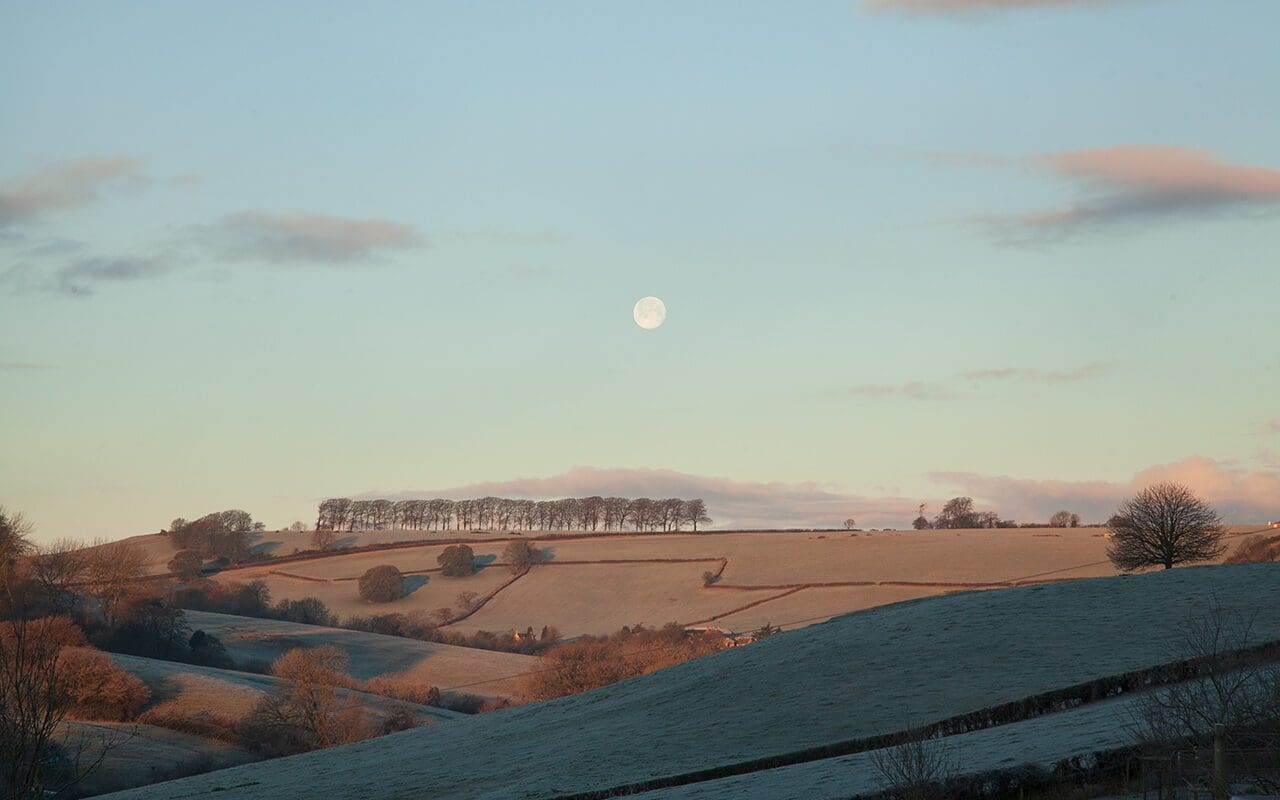
A stillness descends on the garden in January. Greenery pulled back to resting buds and all that is necessary to sustain the winter. It used to be that I wanted these weeks to be short, to be reunited with growth again, but increasingly this time feels precious for the opportunity to look at the bones. Quietened and slowed by the season and with all laid bare to see.
The weeks ahead are rarely a downtime and we are seldom plunged into a winter that makes the garden unworkable. Our snow lasts for no more than a few days and frost rarely stays in the ground for long. Winter here is a time for doing, readying and making changes. To be lost in actions and practicalities, with a mind’s eye on the spring. At least, this is how I see it and, at the beginning of January, I make a list of winter work that will take us through to the middle of February. The moment the snowdrops are in full swing, letting me know that the garden will also be stirring. In time to be ready to wade into the beds to remove the remains of the last season and free the resting buds to the air and the lengthening days.
The winter tasks begin with pruning and initiating order now that the leaves are down. When I started my formal training in the 1980’s we began the pruning at leaf drop, to work on the hardiest woodies first and to save the least hardy until the tail end of winter. So apples and pears and wall-trained fruits and climbers were the first point of focus. We paced ourselves and worked towards the roses, leaving them until the end of February to avoid making cuts that could then be burned by a freeze. I remember the winters then being harder and rose wood blackened from cuts made too early, but I have brought this work forward here in Somerset. In the ten years we have been here, we have never had a winter that has damaged the wood and the time I make up early in the year allows time for detailed work before winter tips in to spring. Mulching the parts of the gardens where there are bulbs that are yet to push through and splitting the perennials that stir early in March.
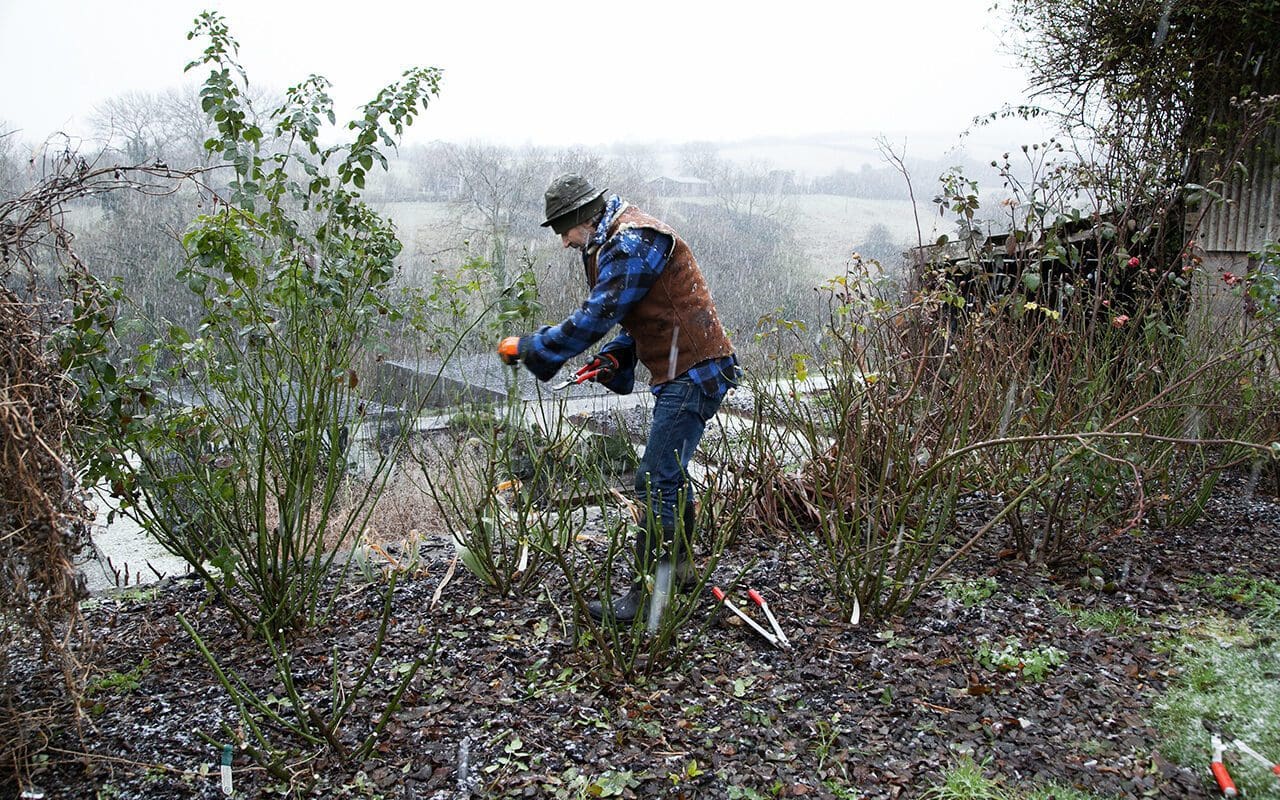
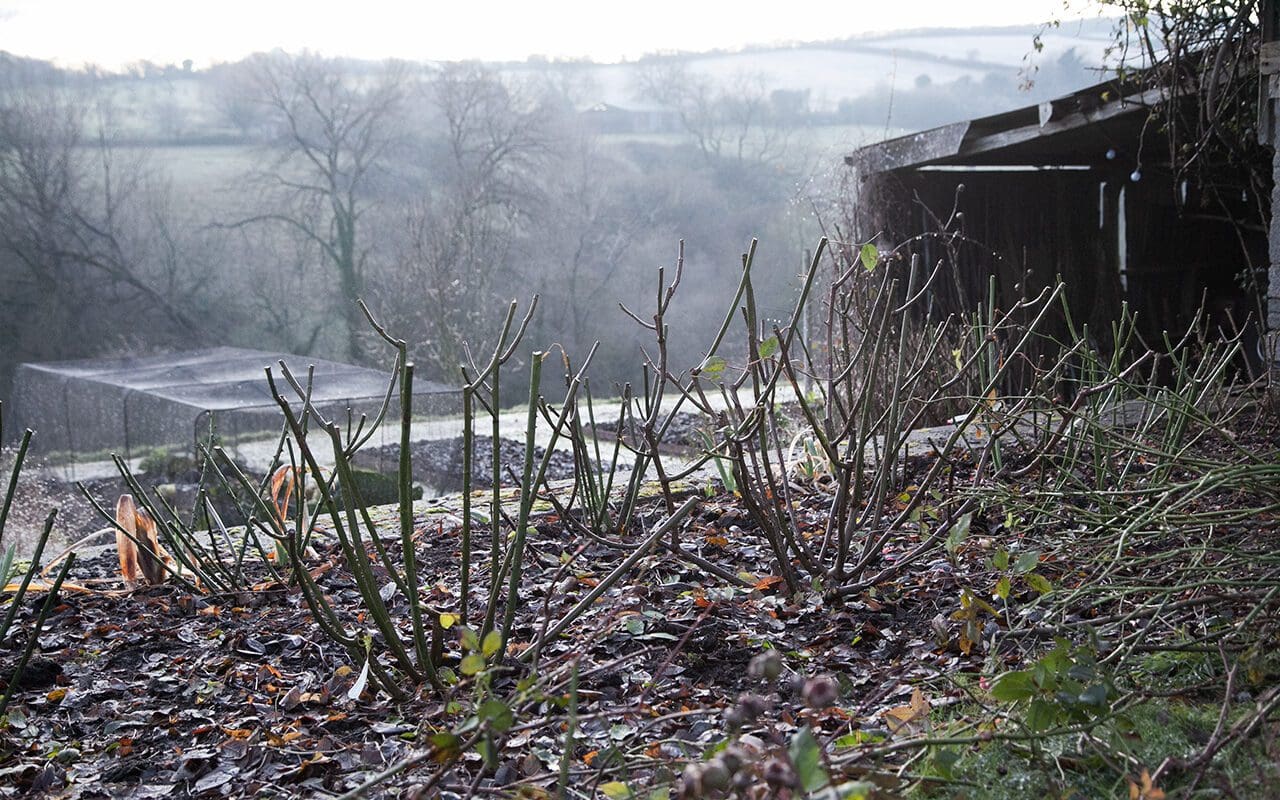
The winter work takes us out into the landscape with tree planting and hedge work and this is a good place to be to retain a clear overview and look back upon the garden. This year, with the help of John, who’s been helping us in the garden since April, we cleared the banks under the hazel at the top of the ditch where the snowdrops were already beginning to nose through the ground in December. They seem to appear earlier every year and I’d made plans to fell a mature hazel that we’d allowed to grow out from a previously broken hedge. There are just a handful of established hazel on the land, but the sixty or so youngsters I’ve planted to make a new coppice should be ready for harvesting by the time we have coppiced the elders.
Hazel responds well to coppicing on an eight to ten year cycle, sending up a fleet of fine young rods that thicken enough to harvest for wood and poles and branch at their reach to make a delicate weave for pea sticks. Wood cut in the first part of the winter retains a pliability that it loses the later it is cut, so the trigger of the snowdrops was useful in setting the winter work into motion in the last fortnight of December.
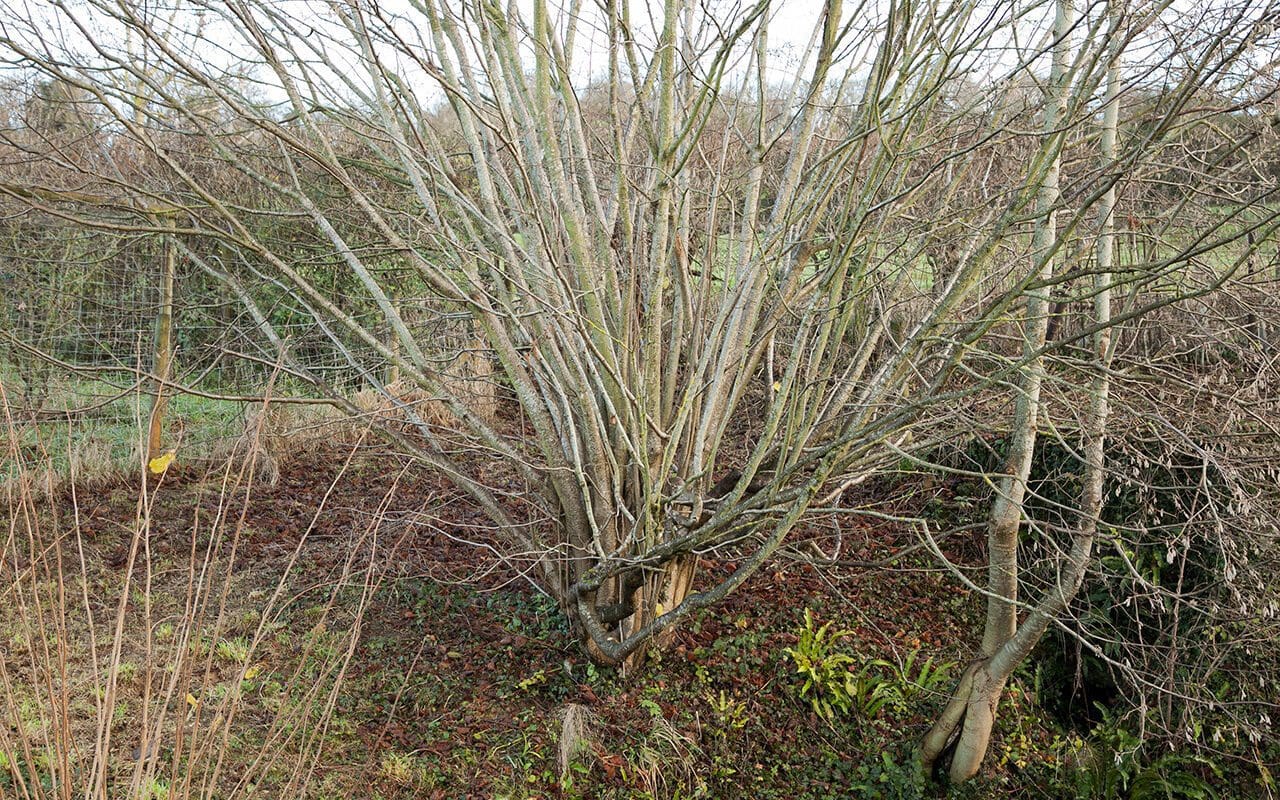
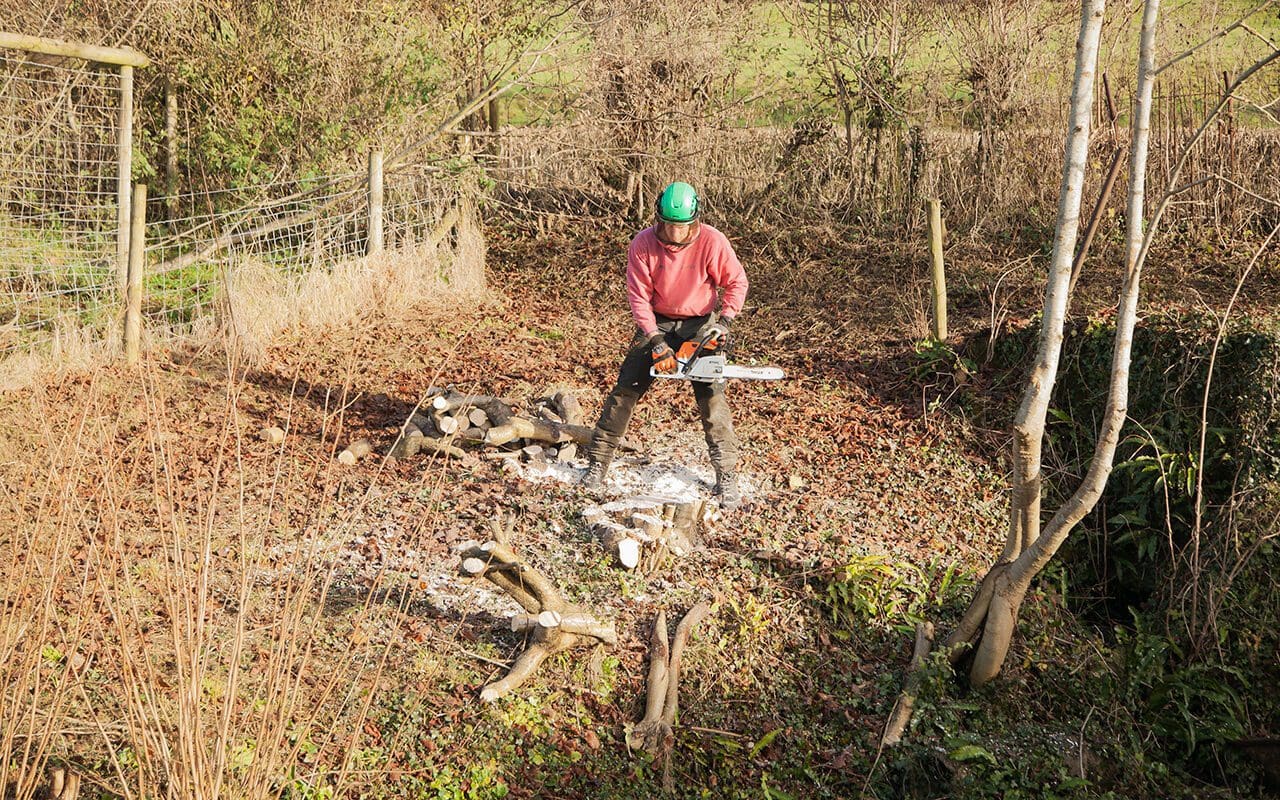
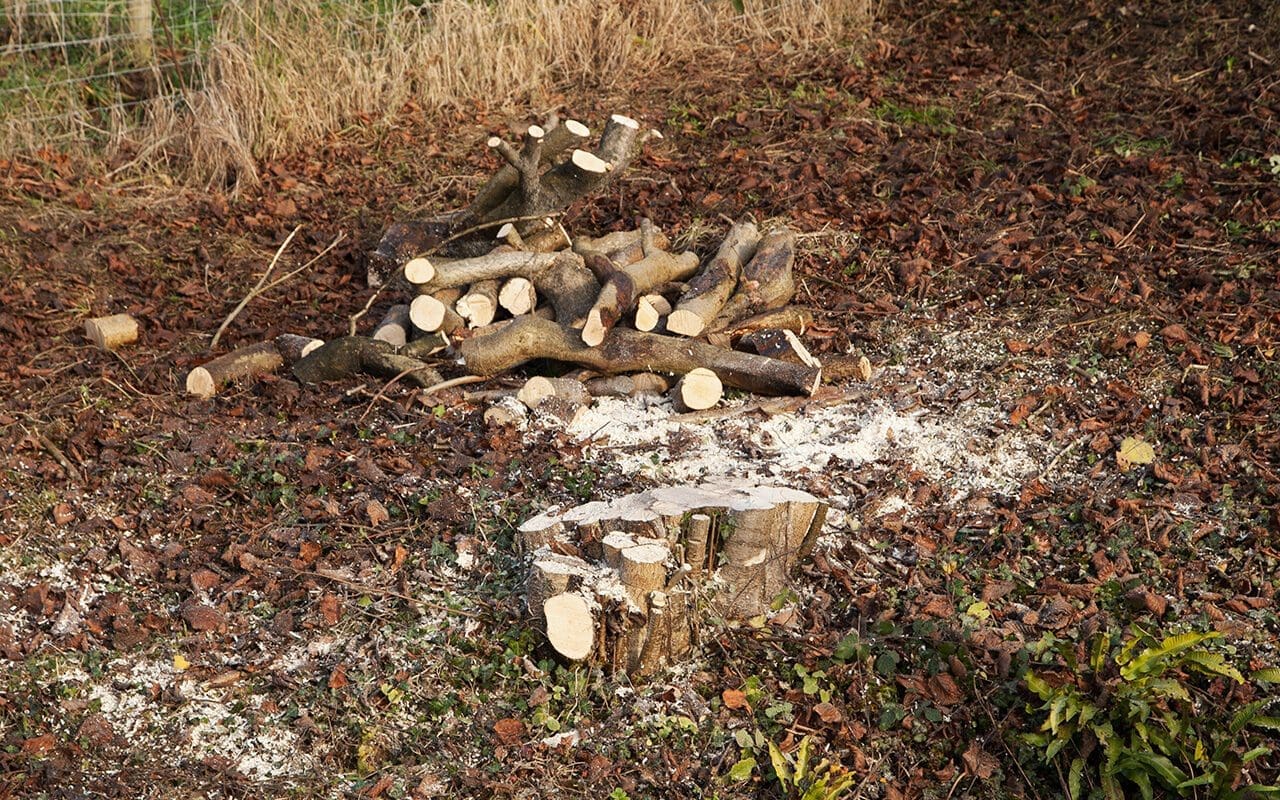
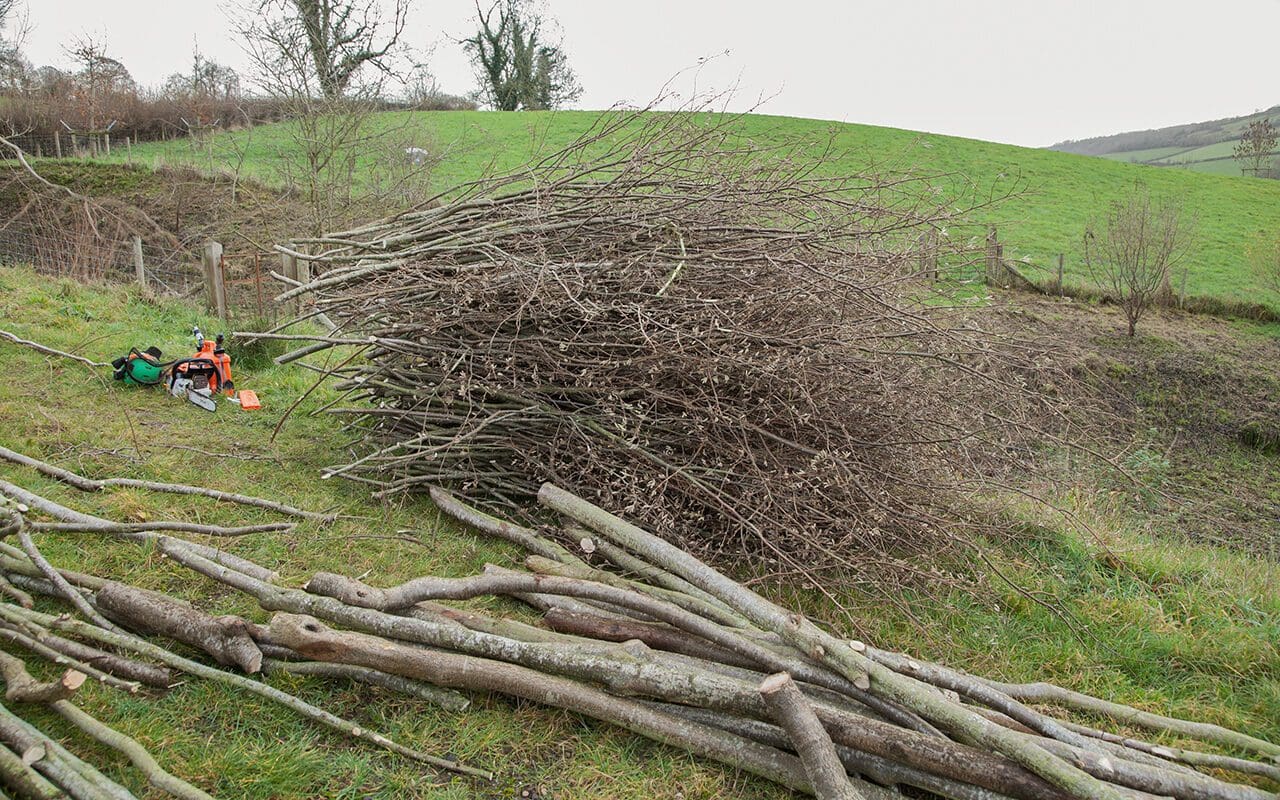
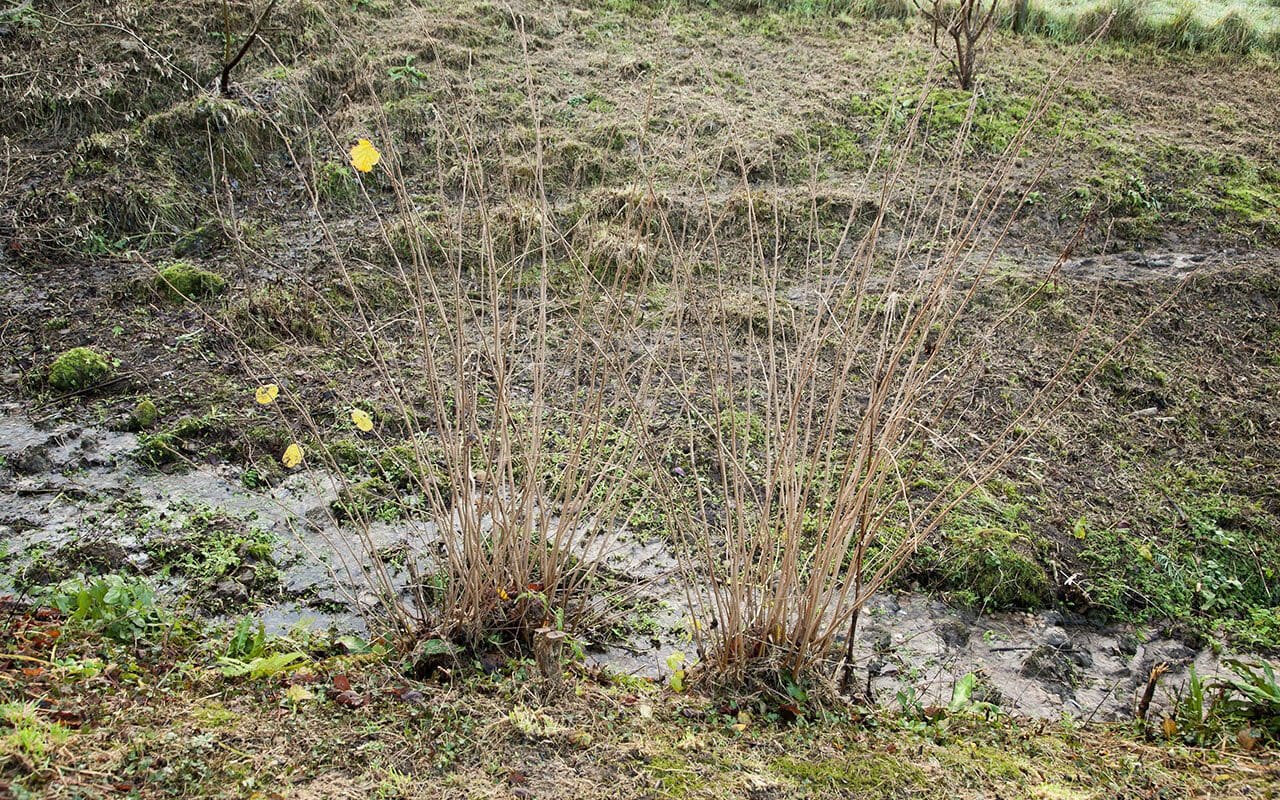
The old coppices I grew up with on the South Downs were well worked land and some of the oldest trees were possibly as much as a thousand years old with the middles of their ancient stools rotted away and the original plant sometimes broken into a family. Coppicing prolongs the life of a tree that responds well to it. Indeed, look at an old hazel that has been left unmanaged and you will often see its limbs leaning like nine pins and snapping at the stump. New growth regenerates from the wound, so management through coppicing simply takes advantage of this nature. The intervention of rotation improves the diversity in the wood, the pool of new light after the fell triggering the ephemerals like foxgloves which by nature live in the halfway place between the wood and the light at the margins.
Here on our banks beneath this recently felled hazel where we have been spreading the primroses about and planting wild daffodils, I expect to see a change these next couple of years. More speedwell, the bulbs basking in spring sunshine to feed their reserves and a proliferation of primrose seedlings that will take this opportunity to extend their reach whilst the going is good. It will not take long – two to three years for the hazel to close over again – and these newly established plants will begin a quieter time in the shadow.
We grade the cuttings, taking the wood for the burner and sectioning the rods for bean poles and the twiggery for pea sticks. The brash is bundled for faggots and a loose weave of unwanted branches is thrown back over the stumps to prevent deer grazing the new shoots in their first important year of ascending upwardly out of harm’s way. It is a process that we are happy to initiate and be part of as the year turns. One of renewal and hope and usefulness. A fine way to start a year that will not be without its challenges.
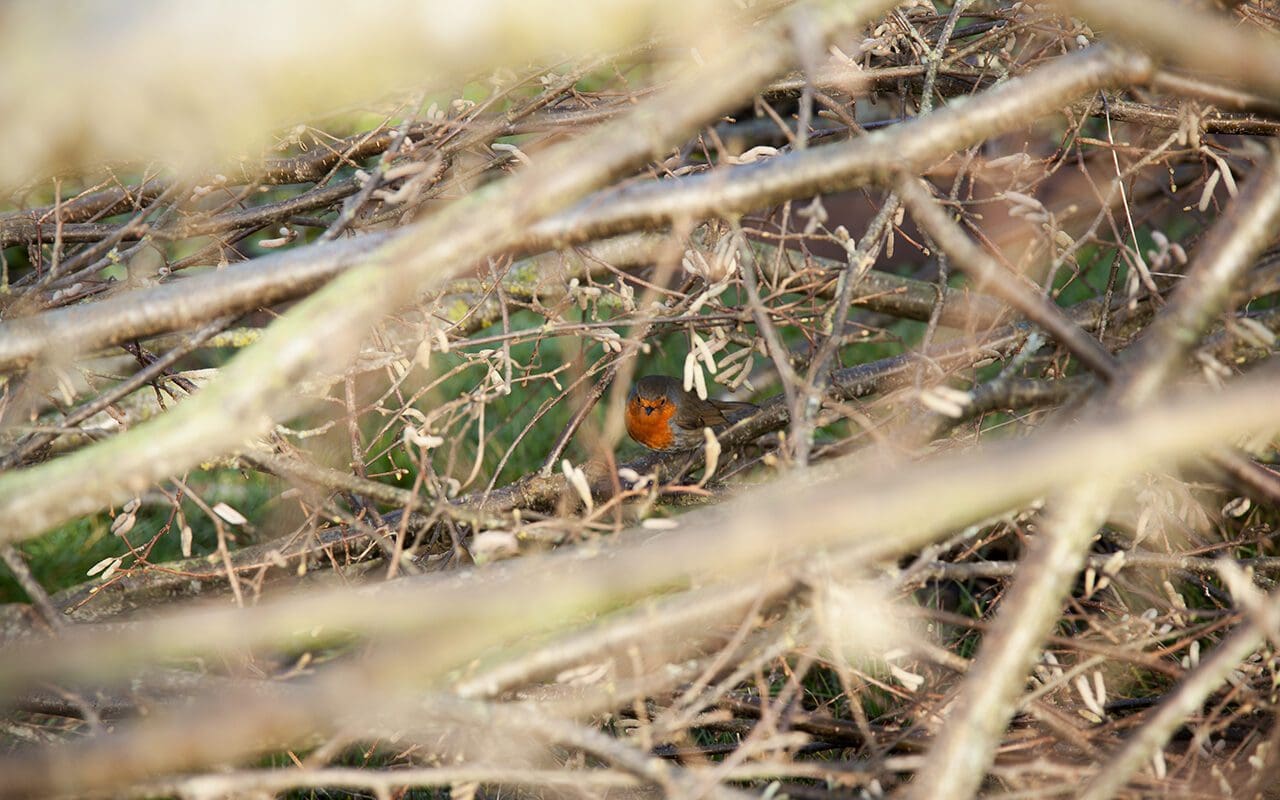
Words: Dan Pearson | Photographs: Huw Morgan
Published 9 January 2021
 Previous
Previous
 Next
Next
